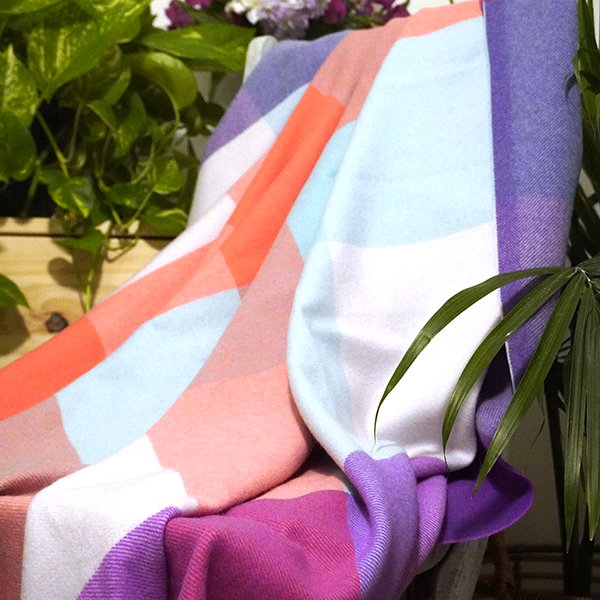Written by: Myagmartseren (Gina) Purev
The month of May is a beautiful time of year when nature comes back to life and flowers are blooming. In America, we also celebrate all the fantastic mothers on Mother's Day and the heritage of Asian Americans and Pacific Islanders all through May.
To honor Mother's Day, we invited one of the female small business owners that we collaborate with for a talk to understand what process goes into making the products we deliver to our customers. Her name is Enkhbaigal. She is an enthusiastic self-made business person, an extraordinarily talented and hard-working craftswoman, and a wonderful mother. She creates beautiful felt wool animal toys and warm, comfortable felt wool slippers. She gave us an insight into what challenges and opportunities she encountered as a business owner that sells handmade, cultural items. Her conversation with us inspired us to dig more into Mongolian felt culture and heritage.
Felt played a crucial role in the lives of inhabitants in Central Asia for centuries. The felt pieces that confirm the earliest felt usage in Central Asia were found in the Pazyrk Tomb in Siberia, Altai Mountain Region (which is northern Mongolia). The tomb is dated back to 300-238 BCE. The findings include beautifully stitched boots, saddle blankets, hats, and felt animals such as a swan. Also, the Noyon Uul Burials, where the Selenga River locates in the hills of northern Mongolia, have presented the earliest artifacts of felt usage by Mongolian nomads.
So, Mongolians have been producing and using felt products in their daily lives for centuries. Felt provided necessities like housing (ger/ yurt) insulation, floor covering, bed mattresses, boots, hats, jackets, and blankets. The felt wool items are incredibly suitable and virtually indispensable for the Mongolian nomadic lifestyle, characterized by frequent travels from one place to another during harsh winter and summer and dependency on the livestock. Traditional Mongolian method of making felt wool consists of the following steps:
- shearing the sheep,
- beating the wool,
- watering and layering,
- pressing, compressing and repeating the process.
Mongolians sheer their domestic sheep by the traditional, cruelty-free method that also benefits the welfare of the sheep during hot summer months. Sheep are sheared off seasonally, and mainly in the spring and fall. The shearing process provides an abundance of wool used to make felt. After the wool is collected, it is pounded and beaten into smaller fine pieces to be matted down. Mongolians perform this separation or beating of the wool with wooden sticks. Then, the hand-beaten wool is then laid down on an older, already made felt. Watering helps to keep the pounded wool stay down. The hot water is poured all over the wool fibers. Next, the wool and water mixture are pressed together. The mixture must be wrapped around a heavy pole and pressed tightly together. A canvas cloth is wrapped over it to maintain and protect the wet wool mixture. The wrapped felt roll is then rolled behind a horse or camel to be tightly compressed. In some places of Mongolia, women roll and compress the felt manually. After the first compression, the entire process is repeated from the watering process until the felt gets compressed and gets a smooth surface.
Enkhbaigal says that women from Khovd province are known to be very skilled at making 'shirmel' rugs and other textiles. Ms. Enkhbaigal is one of these skilled felt crafters in Mongolia. She grew up in Altai sum, Khovd province, and she learned everything about felt crafting from her mother. She started assisting her mother in making felt rugs and socks when she was around seven years old. After graduating from college, she worked as a product manager for a while, but she considered starting her own business due to the low salary. That's when she started making felt products that resembled the five main livestock of Mongolia, and her company has been in operation for more than 20 years this year. She now works alongside 24 female and 2 male artisans at Tsagaan Alt studio in Ulaanbaatar, and she noted more than half of her employees are heads of households. Enkhbaigal says that felt production requires lots of time and labor, such as making the felt from wool, creating designs, cutting, stitching, making models, adding details, etc. For instance, handcrafting one big felt sheep would take an hour and a half. Due to the labor-intensive nature of felt production, her daughter suggests her doing something else, but Ms. Enkhbaigal refuses and has been following dedicating her time and energy to making beautiful felt products alongside other women for two decades. She noted that felt crafters must have a strong work ethic, resilience, passion, and creativity; otherwise, it is a harrowing journey, and many give up before seeing the fruits of their labor
The little sheep and camels made by Ms. Enkhbaigal are our customers' most beloved felt toy in New York. We are delighted that the products that came out of Enkhbaigal's passion and hard work are being delivered to and cherished by other people, in the US, Canada, Germany, and Japan. She is a living heritage of Mongolian felt culture, and we will continue working with her and other artisans that dedicate their lives to continuing and sharing Mongolian culture. You can shop her amazing crafts here.
Written by: Myagmartseren (Gina) Purev




